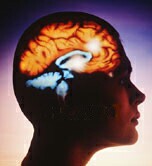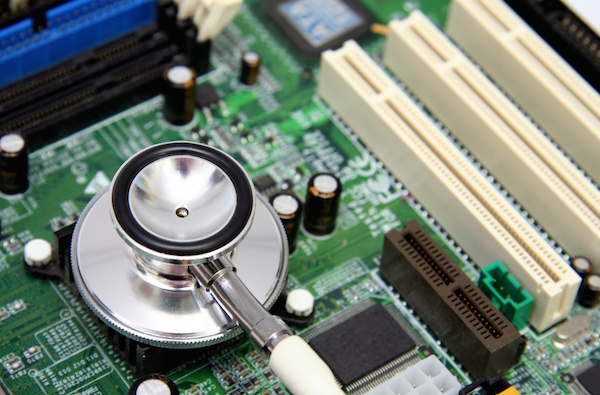
FRIDAY, Aug. 9 (HealthDay News) — Imagine putting on special ultrasound headphones and cheering up when you’re feeling blue. Such a device could someday be an option, a new small study suggests.
In the study, the researchers found that ultrasound waves applied to specific areas of the brain seemed to improve people’s moods.
“It’s like having a martini. It’s not a cure, and we’re not claiming one exposure will cure your depression, but it can improve mood,” said Dr. Stuart Hameroff, lead author of the study and a professor of anesthesiology and psychology at the University of Arizona.
The concept of using ultrasound to improve mood, still in an early experimental stage, could potentially be used to help treat mental and neurological disorders such as depression and traumatic brain injury, Hameroff said. “It’s cheap and apparently effective, accessible and safe, once we figure out the parameters,” he said, referring to how much ultrasound wattage to use and exactly where to direct it.
Before starting the study, Hameroff tried using ultrasound on himself. He had a colleague put a standard ultrasound device on his right temple for 15 seconds. Immediately afterward, he felt nothing, but within the next hour or two, his mood noticeably improved.
Ultrasound, used medically since the 1920s, penetrates tissue including bone and is widely used to image the inside of the body, such as fetuses, blood vessels and organs. Although the study found that ultrasound can damage cells and tissues at extreme levels of intensity, Hameroff said, almost every part of the body — including the brain — has been safely imaged with ultrasound.
For the study, Hameroff and his team tested ultrasound on a group of 31 chronic pain patients. Most suffered from postsurgical back pain and described themselves as depressed. They ranged in age from 29 to 83. Nineteen were women and 12 were men. Fourteen received ultrasound to their temple for 15 seconds, while 17 were given a placebo (an ultrasound device in the “freeze” position), which was not discernible to the participant or the physician.
Participants who received ultrasound reported statistically significant improvements in mood 10 minutes and 40 minutes after the treatment, and a slight improvement in their pain, compared to those who received the placebo.
The study was published recently in the journal Brain Stimulation. And although it showed an apparent association between the use of ultrasound and improved mood, it did not prove a cause-and-effect relationship.
The researchers aren’t sure how ultrasound to the brain improves mood. Hameroff speculated that ultrasound affects the microtubules in the brain — which regulate the connections between nerve cells — making the neurons more likely to fire in the areas of the brain associated with mood.
Some experts think the connection between ultrasound treatment and mood makes sense.
“Mood is affected by the brain and affects the brain in a variety of ways, so I can understand the mechanism by which it might work,” said Robert Thayer, a professor of psychology at California State University, Long Beach. Thayer does research on factors affecting mood.
What is mood? It is a state of feeling, Thayer said. “It’s represented in feelings people have and it varies with the time of day and very important variables, including the amount of exercise you’ve done and food you’ve eaten,” he said.
Dr. Alan Manevitz, a clinical psychiatrist at Lenox Hill Hospital in New York City, prescribes transcranial magnetic stimulation to treat depression without drugs, using magnetic resonance imaging to “balance out electrical activity and affect the neurochemistry of the brain.”
He said he’s intrigued with the potential for using ultrasound to affect the brain, which would allow patients to avoid medications that can have body-wide impact and sometimes tough-to-tolerate side effects.
But Manevitz said he wants to see the use of ultrasound for depression tested with more patients, and would like the researchers to better understand how ultrasound works and what doses would be most effective. “Right now it is all hypothesis,” he said.
The researchers are working with Neurotrek, an electro-medical equipment firm in Los Gatos, Calif., to develop a prototype of a wearable device. Hameroff said he has no financial stake in the company.
More information
Learn more about ultrasound from the U.S. National Library of Medicine.
Copyright © 2025 HealthDay. All rights reserved.

